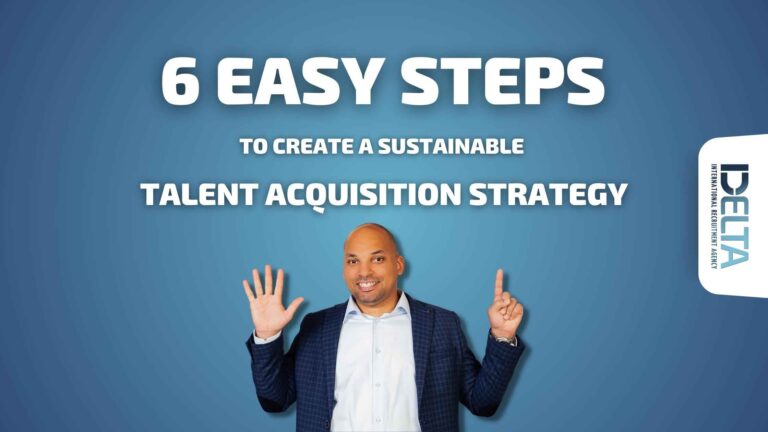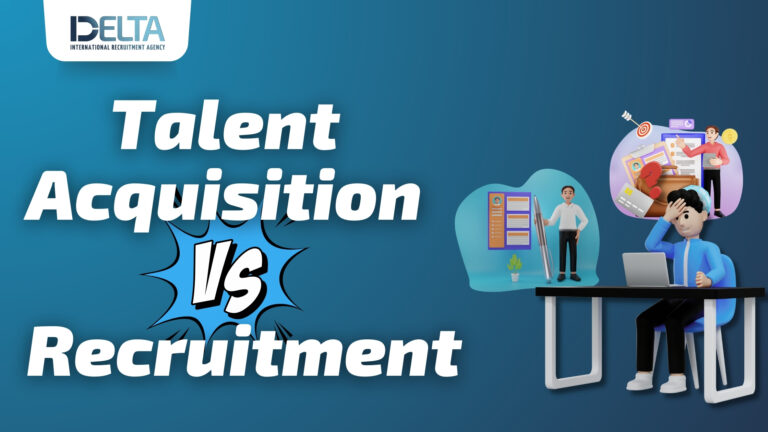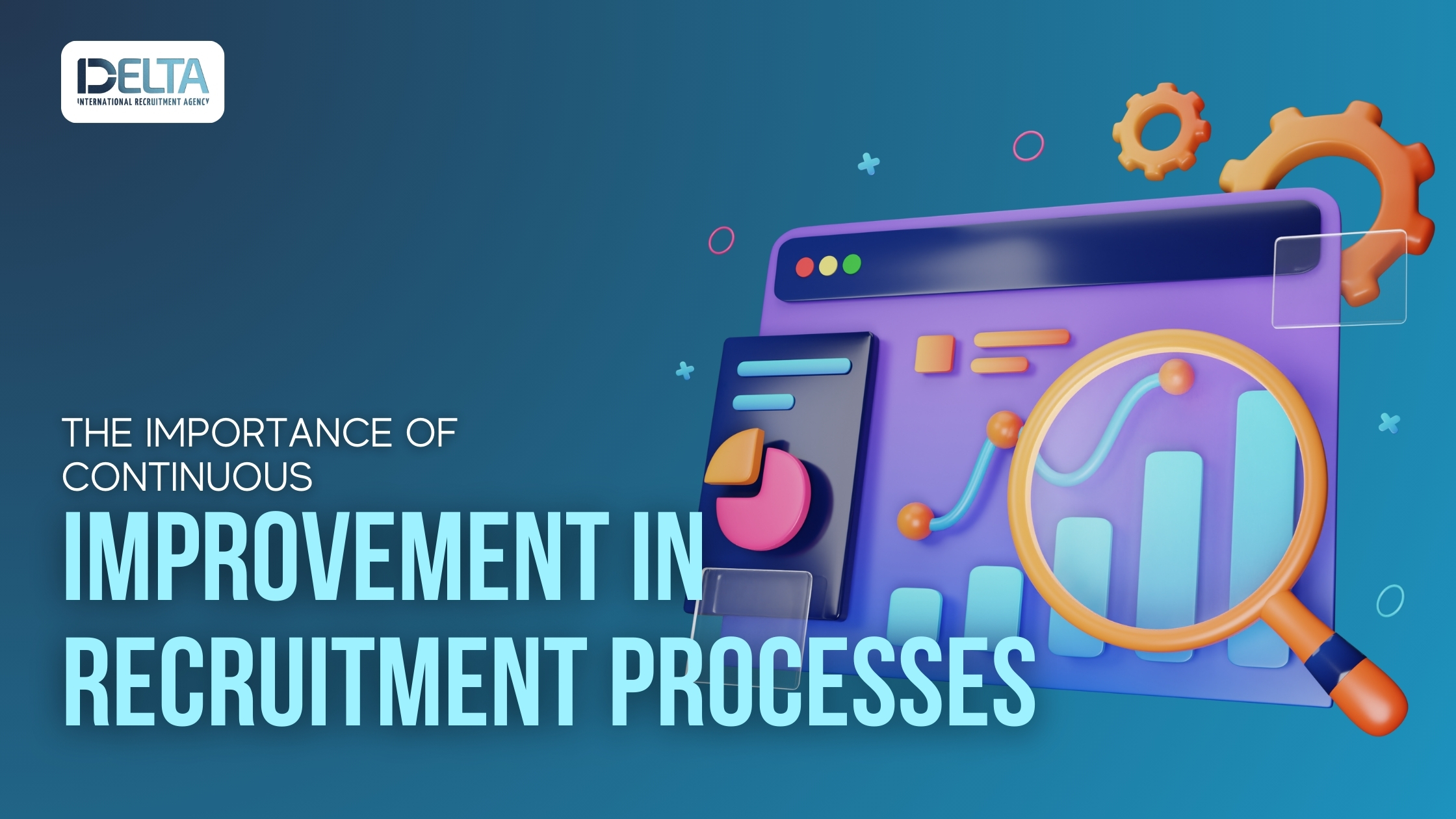Talent acquisition and recruitment are often used interchangeably, but they are actually two distinct processes within the field of human resources. While both aim to attract and hire the best candidates for a job, there are key differences between the two approaches. Understanding these differences can help organizations develop more effective hiring strategies and ultimately, build a stronger workforce.
In this article, we will delve into the nuances of talent acquisition and recruitment, exploring their unique approaches, goals, and outcomes. By the end, you will have a clearer understanding of these two essential functions in the hiring process and how they contribute to the success of an organization.
Definition of Talent Acquisition
Talent acquisition is a strategic approach to identifying, attracting, and onboarding the best talent to meet an organization’s long-term goals. Unlike recruitment, which is often reactive and focused on filling vacancies quickly, talent acquisition involves a deeper analysis of the workforce needs and a commitment to developing a sustainable talent pipeline.
- It encompasses not just sourcing candidates, but also employer branding, future workforce planning, and the development of talent networks.
- Talent acquisition strategies may include university recruiting, professional networking, and creating programs for internal talent development.
Talent acquisition is essential for organizations looking to secure a competitive advantage through their workforce. It's about creating a systematic process that aligns with the strategic goals of the business
Definition of Recruitment
Recruitment is the process of filling vacancies with qualified candidates on a relatively short-term basis. It is often reactive, responding to immediate needs within an organization. Recruitment is focused on filling current vacancies quickly and efficiently.
Recruitment activities typically include:
- Job posting and advertisement
- Screening applications
- Conducting interviews
- Making job offers
Recruitment is a critical function for maintaining the workforce of an organization, ensuring that positions are filled as they become available to keep operations running smoothly.
Strategic Focus in Talent Acquisition
Talent acquisition is not just about filling current vacancies; it’s a strategic approach to finding and nurturing potential candidates for future needs. Talent mapping is a key component, where the focus is on understanding the skills and types of candidates that will be needed in the long term. This involves looking at the company’s growth plans and determining what kind of talent will drive that growth.
- Identifying skills gaps within the organization
- Forecasting future hiring needs based on business strategy
- Building relationships with potential candidates
Talent acquisition requires a forward-thinking mindset, anticipating the needs of the business before they become urgent. It's about creating a sustainable talent pipeline that aligns with the strategic goals of the organization.
Operational Focus in Recruitment
Recruitment’s operational focus is primarily concerned with filling current vacancies within an organization. It is a reactive approach that is triggered by an immediate need, often due to an employee’s departure or the creation of a new position. Recruitment is about finding the right person for the job as quickly as possible.
- Job Posting and Advertisement
- Resume Screening
- Interviewing Candidates
- Job Offer and Onboarding
The process is typically linear and transactional, with a clear set of steps to follow from job posting to onboarding. Recruitment strategies often involve collaboration with hiring managers to ensure that the selected candidates meet the immediate needs of the team and company.
The goal is to minimize the vacancy period and reduce the impact on the organization's productivity.
Importance of Talent Acquisition
Image Source: xobin.com
Long-Term Organizational Success
Talent acquisition is pivotal for the long-term success of any organization. It goes beyond filling vacancies; it’s about finding the right people who can contribute to the company’s growth and innovation over time.
- Strategic Alignment: Ensuring new hires are aligned with the company’s long-term goals.
- Cultural Fit: Identifying candidates who will thrive in the company’s culture.
- Future Leadership: Investing in potential future leaders.
Talent acquisition is not just a process, it's a strategic approach to building a robust workforce that can navigate the complexities of tomorrow's business landscape.
By focusing on these aspects, companies can create a workforce that is not only skilled but also highly engaged and committed to the organization’s vision. This strategic approach to hiring is what sets talent acquisition apart from mere recruitment, which often focuses on immediate needs rather than future growth.
Building a Strong Employer Brand
In the realm of talent acquisition, building a strong employer brand is crucial for attracting top talent. An employer brand that resonates with potential candidates can differentiate a company in a competitive job market, turning passive candidates into eager applicants.
- Visibility: Ensure the company’s values and culture are visible in job postings, social media, and company websites.
- Employee Advocacy: Encourage current employees to share their positive experiences working for the company.
- Consistency: Maintain a consistent message across all platforms to reinforce the employer brand.
A strong employer brand not only attracts candidates but also instills a sense of pride among current employees, fostering a positive work environment and reducing turnover.
By investing in a strong employer brand, organizations can create a self-sustaining cycle of attraction and retention, securing a competitive edge in the talent market.
Proactive Talent Planning
Proactive talent planning is a cornerstone of effective talent acquisition. It involves anticipating future hiring needs and creating a strategic approach to sourcing, engaging, and attracting potential candidates before a need arises. By being proactive, organizations can build a talent pipeline that aligns with their long-term goals and business strategy.
- Identification of future skill requirements
- Analysis of labor market trends
- Development of candidate personas
- Establishment of talent communities
Proactive talent planning ensures that the organization is not caught off-guard by sudden market changes or internal demands. It allows for a more thoughtful and deliberate approach to building a workforce that can sustain the company's growth and innovation.
One of the key aspects of proactive talent planning is the distinguishing between job description and job specification. While the former outlines the duties and responsibilities of a position, the latter details the qualifications and skills needed from a candidate.
Challenges in Recruitment

Discover 5 Recruitment Challenges and their Solutions
Human resource mostly depends on the efficiency with which recruiters connect hiring businesses with qualified job seekers. Here we are going to highlight the challenges … Continue reading
Finding the Right Candidates
One of the most significant challenges in recruitment is finding the right candidates. This involves not only identifying individuals with the necessary skills and experience but also those who align with the company’s culture and values.
To streamline this process, recruiters often use a combination of strategies:
- Crafting clear and detailed job descriptions
- Utilizing targeted job postings
- Leveraging social media and professional networks
- Conducting thorough interviews and assessments
The key to success lies in a recruiter's ability to sift through the noise and pinpoint individuals who will not only excel in their roles but also contribute positively to the organizational ethos.
Despite these efforts, the challenge persists due to the sheer volume of applicants and the complexity of matching the right person to the right role. Recruiters must balance the need for speed with the imperative of quality, making this aspect of recruitment both critical and demanding.
Competition for Talent
In today’s job market, competition for top talent is fierce. Companies are not only competing with each other within the same industry but also across different sectors. This competition can drive up salaries and benefits, making it costly for employers to attract the best candidates.
To stay ahead in this competitive landscape, organizations must differentiate themselves. They can do this by offering unique perks, career development opportunities, and a culture that aligns with the values of their desired workforce. Here’s a brief look at how companies are positioning themselves:
- Unique perks: such as flexible working hours, remote work options, and wellness programs.
- Career development: providing clear career paths, professional training, and mentorship programs.
- Company culture: emphasizing a collaborative environment, social responsibility, and work-life balance.
The ability to stand out as an employer of choice is crucial for securing the talent necessary for growth and innovation. Without a strong value proposition, companies risk losing potential employees to competitors who are more adept at showcasing their strengths.
The page also discusses various methods for developing hiring skills assessments, which can be a strategic tool in identifying candidates who are not only skilled but also a good cultural fit for the organization.
Time Constraints in Hiring Processes
In the fast-paced world of recruitment, time is of the essence. Hiring managers and recruiters often face significant pressure to fill positions quickly to meet organizational needs and maintain productivity. However, this urgency can lead to rushed decisions and potentially unsuitable hires.
- Weak Job Details: A clear and comprehensive job description is the foundation of a successful hiring process. Vague or inaccurate job details can deter qualified candidates and attract unsuitable applicants, leading to a prolonged and inefficient recruitment process.
The challenge is to balance the need for speed with the thoroughness required to find the right candidate. A hasty process may fill the role quickly, but could result in a poor fit, affecting team dynamics and long-term performance
To mitigate time constraints, recruiters can implement strategies such as setting realistic timelines, utilizing technology for faster candidate screening, and maintaining a talent pool for future openings. These steps can help streamline the hiring process without compromising on the quality of new hires.
Strategies for Effective Talent Acquisition

6 Easy Steps to Create a Sustainable Talent Acquisition Strategy
A comprehensive plan that is adaptable, flexible, and can be sustained over time is vital in ensuring that a company’s talent pipeline remains strong. … Continue reading
Employer Value Proposition
An Employer Value Proposition (EVP) is a set of offerings and values that an organization provides to its employees, which distinguishes it from its competitors. It is a critical component in attracting and retaining top talent, as it reflects the identity and culture of the company.
- Clearly defined career paths
- Competitive salary and benefits
- Positive work environment
- Opportunities for personal and professional growth
An effective EVP is tailored to the aspirations and needs of the workforce, ensuring alignment with the organization’s strategic goals.
By communicating the EVP effectively, companies can create a strong connection with potential candidates, making it easier to attract those who share similar values and are more likely to contribute to the company’s success.
Candidate Relationship Management
In the realm of talent acquisition, Candidate Relationship Management (CRM) is a strategic approach that focuses on the engagement and management of potential candidates. This proactive method ensures a warm talent pool, ready to be tapped into when the need arises.
- Establishing a strong communication channel with candidates
- Providing regular updates and feedback
- Creating a personalized experience for each candidate
By nurturing relationships with candidates, organizations can reduce time-to-hire and improve the quality of their talent pipeline.
CRM systems facilitate the tracking and analysis of interactions with candidates, enabling recruiters to tailor their approach and maintain a positive candidate experience. This personalized touch can significantly enhance an employer’s brand and attract top talent.
Diversity and Inclusion Initiatives
Diversity and Inclusion Initiatives are essential in shaping a workforce that reflects the society in which a company operates. Incorporating diverse perspectives and backgrounds can lead to more innovative solutions and a more inclusive work environment. To effectively implement these initiatives, companies should:
- Establish clear diversity goals and metrics
- Provide diversity and inclusion training for all employees
- Foster an inclusive culture that celebrates differences
Embracing diversity is not just a moral imperative but also a competitive advantage. It allows organizations to tap into a wider talent pool and better understand their diverse customer base.
Moreover, tracking the progress of diversity initiatives is crucial. Companies may use metrics such as the percentage of underrepresented groups in leadership positions or the diversity of candidate slates. By continuously monitoring and improving these initiatives, organizations can ensure they are making meaningful strides towards a more diverse and inclusive workplace.
Technology Impact on Recruitment
Use of Applicant Tracking Systems
Applicant Tracking Systems (ATS) have revolutionized the recruitment process by streamlining the initial stages of candidate selection. ATS solutions help organizations manage job applications and resumes more efficiently, ensuring that no potential candidate slips through the cracks.
The benefits of using an ATS include:
- Improved candidate experience through automated communication
- Enhanced collaboration among hiring team members
- Reduced time-to-hire by automating routine tasks
- Better organization and accessibility of candidate information
An ATS can significantly reduce the administrative burden on recruiters, allowing them to focus on more strategic aspects of their role.
While ATS platforms are powerful tools, they require careful configuration to align with the company’s hiring practices. It’s essential to regularly update the system to reflect changes in job requirements and market conditions.
AI in Candidate Screening
The integration of Artificial Intelligence (AI) in candidate screening has revolutionized the recruitment process. AI algorithms can now analyze vast amounts of data to identify the most suitable candidates for a position. This not only speeds up the hiring process but also enhances the quality of candidate selection by minimizing human biases
- AI-powered tools assess resumes and online profiles to shortlist candidates.
- Predictive analytics can forecast candidate success based on historical data.
- Chatbots can engage candidates and answer queries, improving the candidate experience.
The use of AI in screening is a game-changer, enabling recruiters to focus on the most promising applicants and engage with them more meaningfully.
While AI brings efficiency, it’s crucial to remember that human judgment remains indispensable in interpreting results and making final hiring decisions. Recruiters must stay informed about the capabilities and limitations of AI to leverage it effectively, especially during challenging times such as a hiring freeze.
Virtual Recruitment Events
The advent of virtual recruitment events has revolutionized the way companies connect with potential candidates. These events range from webinars to virtual career fairs, allowing for a broader reach and the convenience of engaging with talent from various geographical locations.
- Webinars provide a platform for companies to showcase their culture and opportunities.
- Virtual career fairs enable real-time interaction between employers and job seekers.
- Online panels, like the ASML Virtual Panel Series, offer insights into specific industries or roles
The flexibility and cost-effectiveness of virtual events make them an increasingly popular choice for companies looking to expand their talent pool.
The effectiveness of these events can often be seen in the increased number of applicants and the diversity of the candidate pool. By leveraging technology, organizations can create a more dynamic and inclusive recruitment process.
Measuring Success in Talent Acquisition

Discover 5 Recruitment Challenges and their Solutions
Human resource mostly depends on the efficiency with which recruiters connect hiring businesses with qualified job seekers. Here we are going to highlight the challenges … Continue reading
Quality of Hires
The quality of hires is a pivotal metric in assessing the effectiveness of talent acquisition strategies. It reflects not only the skills and competencies of new employees but also their alignment with the company’s culture and values. To accurately gauge this quality, organizations may consider factors such as performance ratings, the achievement of set milestones, and employee engagement levels.
- Performance ratings after the first year of employment
- Achievement of initial milestones within the first six months
- Employee engagement scores as an indicator of cultural fit
Ensuring a high quality of hires is essential for fostering an agile work environment and driving long-term success. This requires a thorough understanding of the roles and a strategic approach to sourcing candidates who can grow and evolve with the company.
Time-to-Fill Metrics
Time-to-fill metrics are a crucial indicator of the efficiency of the talent acquisition process. They measure the average time it takes to fill a position from the moment it is vacated or created to the moment a new hire is brought on board. Shorter time-to-fill periods can signal a more agile and responsive talent acquisition strategy, but they must be balanced against the quality of hires.
- Start date of vacancy
- Job posting date
- Date of first candidate application
- Date of first interview
- Offer acceptance date
By closely monitoring time-to-fill metrics, organizations can gain insights into their hiring effectiveness and make informed decisions to streamline their recruitment processes.
Retention Rates
Measuring the success of talent acquisition efforts often culminates in analyzing retention rates. High retention rates are indicative of a successful talent acquisition strategy, as they reflect the organization’s ability to not only attract but also maintain top talent over time.
Retention rates can be influenced by various factors, including the effectiveness of the onboarding process. A smooth onboarding experience is crucial, as it sets the foundation for an employee’s journey within the company. Studies have shown that a well-structured onboarding process can significantly enhance new hire retention and productivity.
Retention metrics provide valuable insights into the long-term impact of talent acquisition practices. By tracking these rates, companies can identify areas for improvement and ensure that their hiring efforts translate into sustained employee engagement and contribution.
To further illustrate the importance of retention, consider the following data:
- Smooth onboarding improves new hire retention by 82%.
- Productivity jumps by 70% with a good onboarding process.
These statistics underscore the critical role that effective onboarding plays in retaining talent and maximizing their potential within the organization.
Conclusion
In conclusion, talent acquisition and recruitment are both essential processes in the workforce, but they serve different purposes. Talent acquisition focuses on long-term strategic planning and building relationships with potential candidates, while recruitment is more transactional and focuses on filling immediate job openings. Understanding the differences between the two can help organizations optimize their hiring strategies and attract top talent effectively.
Frequently Asked Questions
What is the difference between Talent Acquisition and Recruitment?
Talent Acquisition focuses on strategic, long-term planning to attract, engage, and retain top talent, while Recruitment is more transactional, focusing on filling immediate job openings.
Why is Talent Acquisition important for organizations?
Talent Acquisition is important for long-term organizational success as it ensures the right talent is in place to drive business growth and innovation.
What are the key challenges in Recruitment?
Challenges in recruitment include finding the right candidates, dealing with competition for talent, and facing time constraints in the hiring process.
How can organizations effectively attract top talent?
Organizations can attract top talent through a compelling Employer Value Proposition, effective Candidate Relationship Management, and implementing Diversity and Inclusion initiatives.
What role does technology play in Recruitment?
Technology impacts recruitment through the use of Applicant Tracking Systems, AI for candidate screening, and the organization of virtual recruitment events.
How is success measured in Talent Acquisition?
Success in Talent Acquisition is measured through the quality of hires, time-to-fill metrics, and retention rates of recruited employees.
What is the difference between Employer Branding and Talent Acquisition?
Employer Branding focuses on shaping the perception of the organization as an employer, while Talent Acquisition is the process of identifying, attracting, and hiring top talent.
How can organizations improve their recruitment processes?
Organizations can improve recruitment processes by streamlining hiring workflows, leveraging data analytics for decision-making, and providing a positive candidate experience.
Tips of Jobs Seekers: Differences: Talent Acquisition vs. Recruitment



